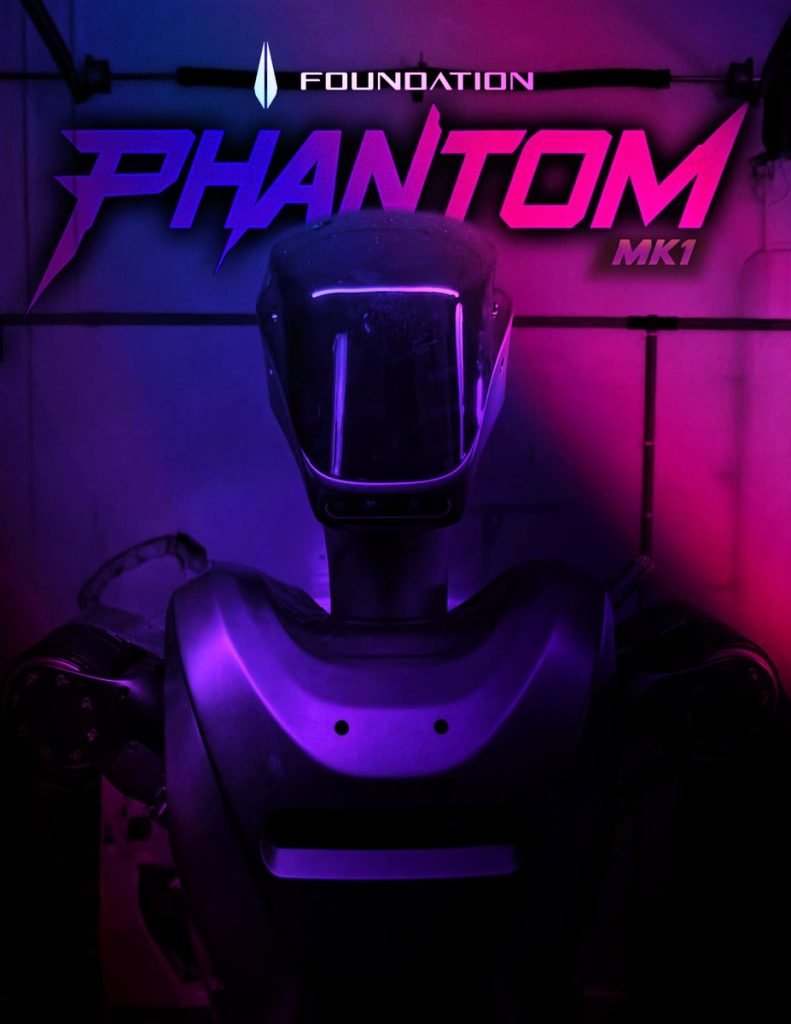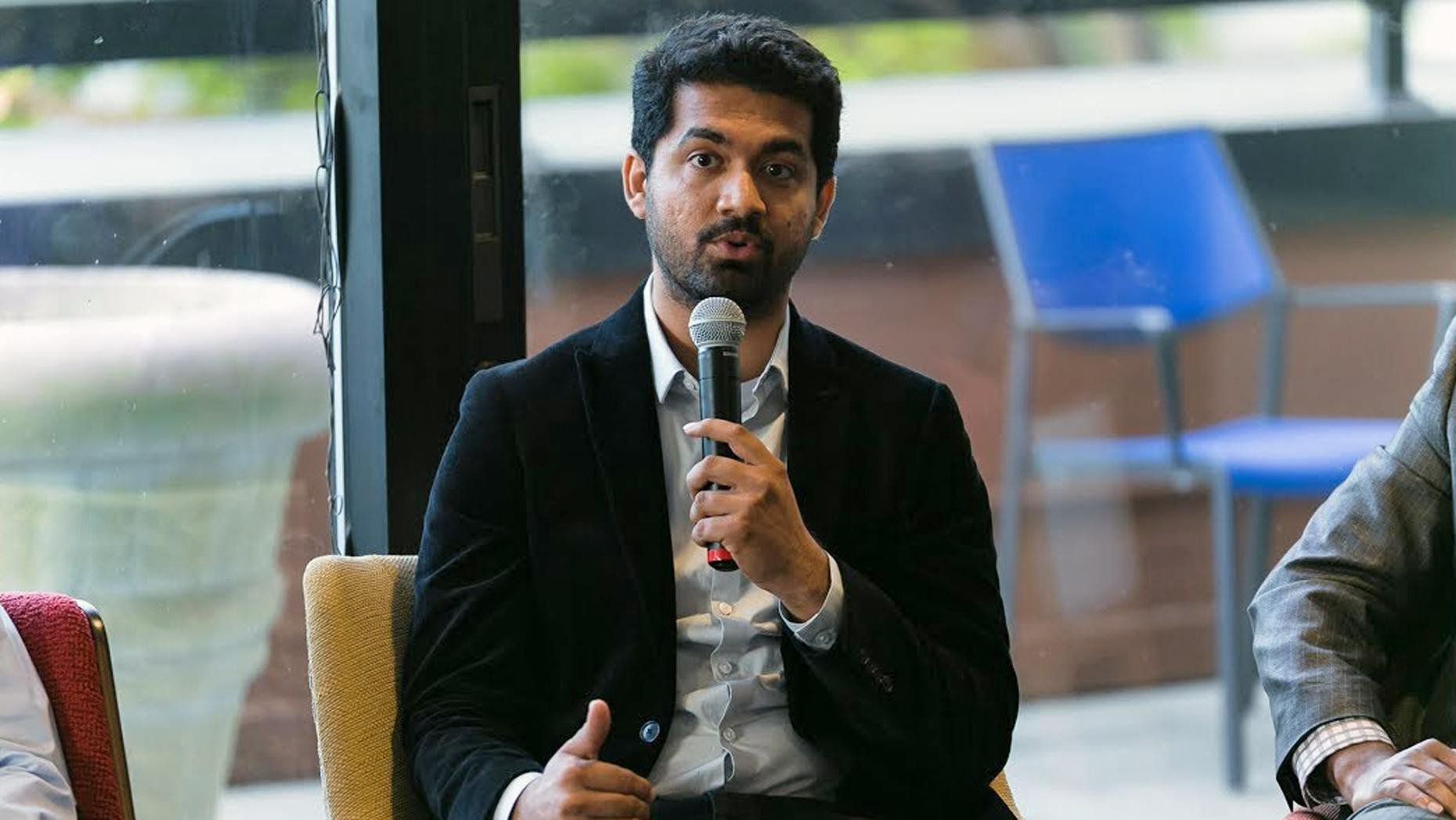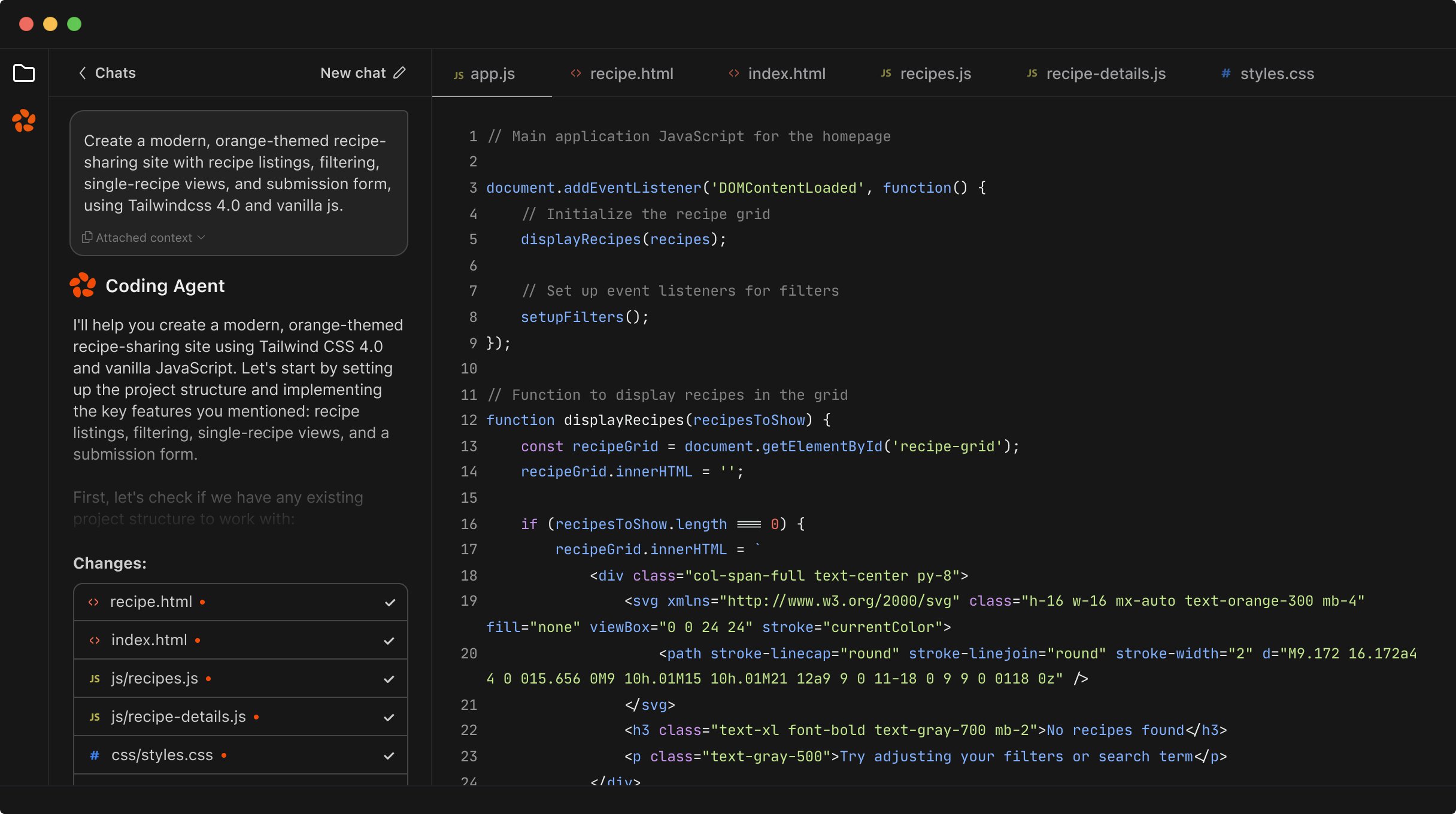Foundation, the humanoid robotics company led by Sankaet Pathak, has entered the spotlight after Pathak’s former fintech venture Synapse collapsed in 2024. Now, just months later, Pathak is seeking to raise $100 million for Foundation, aiming for a $1 billion valuation. Foundation debuted its first robot, called Phantom, earlier this year. The startup, which raised $11 million in pre-seed funding last August, wants to address workforce shortages and complex labor tasks with advanced robotics.
This ambitious funding push comes as Synapse’s bankruptcy has left tens of millions in deposits unaccounted for, sparking industry concern. Despite the setback, Pathak looks to pivot to robotics, hoping Foundation will lead the next wave of automation. The industry is watching closely as Foundation builds momentum in a rapidly changing market.
Background on Sankaet Pathak and Synapse Collapse
Sankaet Pathak is an entrepreneur best known for founding Synapse, a backend banking platform used by numerous fintech partners. Synapse provided APIs that handled payments, deposits, and compliance for financial startups, helping many small players quickly launch digital banking offerings. The company saw rapid growth, becoming a go-to solution for fintech integrations.
However, the story took a sharp turn in 2024. Synapse filed for bankruptcy after a series of operational and partnership problems, mainly with partner Evolve Bank & Trust. This left unresolved issues about the whereabouts of tens of millions of client dollars. These financial headaches affected not only Synapse but also many fintech companies relying on its services, including small digital banks and neobanks.
The Synapse ordeal put Pathak in the media and regulatory spotlight. There was outrage from both fintech partners and affected customers about funds being inaccessible or untraceable. For Pathak, this was a serious blow, raising questions about backend infrastructure in fintech and the responsibility of platform founders when things go wrong.
The collapse of Synapse wasn’t just a business failure, but also left lasting consequences for Pathak’s reputation in tech finance. Moving from fintech to robotics is seen by some as a surprising pivot, given the scale of the unresolved mess left behind at Synapse. As Pathak steps into this new field, the financial world is keeping a close eye on the aftermath and any developments regarding lost consumer funds.
Foundation’s Vision and Mission in Humanoid Robotics
Foundation has set out a clear public goal: to develop advanced humanoid robots able to work in complex environments. According to their mission statement, Foundation’s purpose is to offer robotic labor solutions to address workforce shortages in demanding sectors like logistics and manufacturing. The startup’s messaging leans heavily on solving the problem of a diminishing labor pool, especially in roles considered repetitive, strenuous, or unsafe for humans.
The company claims its humanoid robots are being designed to work alongside people rather than replace them wholesale. There is an emphasis on adaptability and intuitive operation, suggesting that Foundation sees a future where robots can quickly shift between different workplace tasks. The vision also touches on how robotics could help fill roles in areas where recruiting and retention have been persistent problems for employers.
In statements shared with the media, Foundation executives say they aim to create machines that go beyond “dumb automation.” Instead, the goal is robots with dexterity, perception, and a level of autonomy that allows them to function in unpredictable, unstructured environments. As of now, a key challenge is making humanoid robots that truly learn and improve on the job rather than requiring frequent human intervention.
Underlying all of this is the broader ambition to be a leader in the “future of work.” Foundation seeks to position itself as not just another robotics company, but as a driver of change in global labor markets, where technology might offer a lifeline to struggling industries. The company’s marketing reflects the growing conversation about intelligent machines as potential solutions to demographic and economic trends.
For Foundation, humility and capability are both selling points. The startup presents itself as the answer to a labor crunch, but also as a team aware of the real-world complexity of implementing robots at scale – and the risks of overpromising.
The Debut of Phantom: What We Know So Far
The centerpiece of Foundation’s early progress is Phantom, the startup’s first humanoid robot. This robot made its debut earlier in 2025 and is central to Foundation’s pitch to investors. While precise technical specifications remain scarce, media coverage reflects that Phantom is designed to be agile, adaptable, and visually similar to human workers – suggesting a focus on both physical functionality and user acceptance.
Phantom reportedly showcases significant strides in robot dexterity, such as performing packaging, sorting, or palletizing in warehouse-style environments. The company suggests that Phantom’s design allows for integration with existing infrastructure, meaning companies don’t need to overhaul their workplaces to deploy these robots. Test demonstrations have shown Phantom performing simple repetitive tasks with human-like motion profiles.
The robot uses a mix of cameras, sensors, and AI algorithms to navigate around obstacles and interact with objects. Foundation claims this gives Phantom a degree of autonomy, but it’s not clear whether current models can handle unstructured settings without human oversight. This is a major technological challenge across the humanoid robotics industry.
Phantom’s public debut coincides with a surge in interest in robotic labor, particularly as headlines focus on automation in factories and warehouses. Foundation’s marketing for Phantom centers on reliability, safety, and quick deployment, all features that resonate with industries struggling to fill operational gaps.
So far, Phantom’s impact is mostly promotional – use cases are still limited, and it remains to be seen how these early prototypes will translate to full-scale commercial adoption. Industry observers are watching for independent reviews and real-world applications that can confirm if Phantom lives up to Foundation’s promises.
Current Fundraising Efforts and Valuation Goals
Sankaet Pathak’s efforts to raise $100 million for Foundation are notable for their scale and speed. The company is reportedly seeking this investment at a $1 billion valuation, a figure that has captured industry attention given how recently Foundation emerged and the relatively early stage of its product development. The size of the target reflects both confidence in the market opportunity and perhaps a desire to position Foundation as a major player early on.
Fundraising efforts have focused on investors familiar with the robotics and artificial intelligence sector, including previous backers from Pathak’s fintech days. According to The Information, this aggressive funding round comes just months after Foundation’s pre-seed success, which brought in $11 million last August. Raising nearly 10x that amount would place Foundation among the best-funded robotics startups globally.
Pathak has emphasized that the new capital would accelerate product development and pave the way for pilot partnerships with major corporations. The high valuation reflects expectations in the market for rapid progress, but it is also drawing skepticism from some analysts who question how much a young company with a prototype can actually deliver. This is even more pronounced given Pathak’s recent financial and reputational setbacks at Synapse.
For investors, the question is whether Foundation’s core technology and team can execute at the level the shiny valuation implies. There is an appetite for robotics startups, driven by ongoing worker shortages and big bets on automation, but expectations are high for those attracting nine-figure sums. How Foundation manages this period – turning buzz into working product – will likely define its future prospects.
Also Read
Square Enix Symbiogenesis Expands on Sony Soneium Blockchain
Investment History and Key Backers
Foundation’s ability to quickly attract funding is due in part to Sankaet Pathak’s established network. The company’s initial pre-seed round in August 2024 netted $11 million from a combination of venture capitalists and angel investors focused on transformative tech. Tribe Capital led this early round, signaling a strong vote of confidence from a group with experience in backing high-growth startups.
Other backers in the first round included both well-known angel investors and some industry operators who see robotics as the next major tech frontier. Foundation’s early capital was used to build out the engineering team and begin work on its robot prototypes, setting the stage for the Phantom debut. The presence of investors with backgrounds in logistics and automation helped validate Foundation’s market focus.
Sankaet Pathak’s background in fintech played a double role here: on one hand, it made him a familiar name to investors who backed disruptive finance companies; on the other, it raised eyebrows due to the unresolved Synapse drama. Some investors from fintech have reportedly taken a wait-and-see approach, while others have shown continued trust in Pathak’s ability to build ambitious tech startups.
As Foundation looks to close a much larger round, the investor mix will shift, possibly including larger funds with expertise in hardware scaling, AI development, and B2B sales. This blending of investor backgrounds hints at a company trying to bridge the world of Silicon Valley software with the practical demands of manufacturing and logistics automation. Securing high-profile supporters early can also help counter skepticism from critics watching Pathak’s comeback attempt after Synapse.
Also Read
Last Chance to Exhibit at TechCrunch AI Sessions at Berkeley
Foundation’s Position in the Robotics Market
Foundation enters the robotics sector at a pivotal moment. Interest in humanoid robots has never been higher, driven by advances in AI, falling hardware costs, and aggressive adoption in warehousing and logistics. Foundation’s mission overlaps with the goals of established players like Boston Dynamics and emerging startups racing to create “generalist” robots for the workplace.
The company attempts to differentiate itself by focusing on ease of integration and the ability for robots to step into existing workflows. This not only simplifies the value proposition, but could help Foundation capture shares of industries reluctant to overhaul their facilities. Foundation’s positioning also signals it wants to move fast, hoping to capitalize on growing anxiety about labor shortages before slower-moving incumbents do.
Despite being a new entrant, Foundation is known because of Pathak’s profile as a founder. The company is leveraging publicity from Phantom’s debut and its eye-popping funding targets to generate buzz. The fact that Foundation is aiming for workforce augmentation – rather than full replacement – may also soften resistance among prospective business clients worried about the optics of job replacement.
As the robotics sector becomes more crowded, early visibility and credible founder narratives will be crucial. Foundation is betting that momentum, a clear message, and investor backing can position it among the top robotics startups. The company faces strong competition but enters at a time of expanding opportunity for new entrants offering realistic applications of humanoid robots.
Also Read
Florida Encryption Backdoor Bill for Social Media Fails to Pass
Industry Response and Skepticism After Synapse
The reaction to Foundation’s creation has been mixed, largely colored by the fallout from Synapse’s collapse. Many in the technology and venture capital communities acknowledge Pathak’s track record as an innovator, but express reservations due to unresolved issues regarding lost deposits at Synapse. Some fintech leaders have voiced concerns about transparency and accountability, suggesting that Pathak’s quick pivot leaves lingering questions about leadership in crisis situations.
On the flip side, others argue that Pathak’s experience troubleshooting complex problems in fintech might be an asset in building hard tech companies. The pressure to rebound from such a public failure is intense, and some VCs admire Pathak’s willingness to start over in a completely different sector. However, the industry at large is watching to see if Pathak applies lessons learned from Synapse to Foundation’s governance and risk management practices.
Trade press and independent analysts have pointed out how quickly Foundation moved to raise money after the Synapse situation came to a head. For some, this is a red flag about focus and follow-through. For others, it’s evidence of a founder able to rally and mobilize resources in the face of setbacks. The difference in perspective is often determined by the level of exposure a person had to Synapse’s problems.
Ultimately, Foundation has more to prove than most new startups in robotics, not just in terms of technology, but also in trust and management. Until Foundation delivers on its promises, skepticism will likely persist – not only because of the technical difficulties involved, but also due to unresolved baggage from Pathak’s past venture.
Also Read
Apple’s New Chips Target Smart Glasses, Macs, and AI Hardware
Labor Shortages and the Demand for Advanced Robots
The labor market for logistics, warehousing, and manufacturing has faced mounting challenges over recent years. Demographic trends, rising costs, and worker shortages have combined to create significant gaps on production and distribution lines. Businesses have had to raise wages, offer incentives, and even cut back on operating hours due to persistent hiring difficulties. This environment has laid the groundwork for companies like Foundation to pitch advanced robots as part of the solution.
As industries struggle to fill roles, the argument for deploying humanoid robots grows more compelling. Foundation and its competitors are seeking to provide robots capable of handling tasks that are either unattractive or physically demanding for human employees. By automating these roles, firms hope to stabilize operations and manage growing demand, especially in peak seasons.
- Logistics hubs face growing backlog due to hiring gaps
- Manufacturers seek automation to remain competitive
- Robots promise consistent productivity and lower accident rates
Many industry watchdogs caution that even the best robots currently require oversight and maintenance, and are not a panacea for complex labor issues. For now, humanoid robots are positioned as assistants rather than replacements. The hope is that further advances in robotics and AI will enable a gradual scaling up of autonomous tasks.
The urgency for solutions means companies like Foundation are under pressure to deliver real-world results quickly. As businesses look to future-proof their operations, robots that can learn and adapt on the job – like Foundation’s promised Phantom – have the potential to shape the next decade of industrial work.
Also Read
Widespread Timeline Issues Hit X as Users Report Outages
The Competitive Landscape for Humanoid Robotics
The field of humanoid robotics is growing crowded, attracting established players, ambitious startups, and major investments from tech giants worldwide. Competition is fierce, as each contender strives to develop machines that are reliable, dexterous, and easy to train. Foundation’s emergence puts it in direct competition with well-funded outfits like Boston Dynamics, Agility Robotics, and Figure AI, among others.
In this environment, differentiating factors matter. Companies are trying to stand out based on application scope, integration ease, and operational costs. Boston Dynamics is known for acrobatic robots, while Agility focuses on warehouse-ready machines. Foundation’s angle is humanoid forms for jobs that blend automation with flexibility, aiming to bridge a gap between general-purpose robotics and narrowly focused automated systems.
Larger technology firms like Tesla and Amazon have also expressed interest in humanoid robotics for internal use, and their eventual commercial entry could reshape the landscape. As a result, most startups – including Foundation – are racing to secure customers and prove product-market fit before giants shift their focus from research to large-scale deployment.
Collaborative partnerships, pilot programs, and media demos have become essential tools for standing out. Companies that can deploy usable solutions, collect feedback, and iterate quickly often gain an early advantage. Foundation hopes that its speed and the credibility of its early funders can help it keep pace with older, better-known competitors in the space.
Also Read
Zen Agents by Zencoder: Team-Based AI Tools Transform Software Development
Potential Challenges Ahead for Foundation and Pathak
Launching a robotics company is fraught with technical and operational risk. Foundation faces significant hurdles: developing robots that work in real-world, unpredictable settings; building out manufacturing and support infrastructure; and moving beyond pilot-stage deployments. Turning enthusiastic investor support into stable revenue is a tall order in robotics, where even the best technology may require years of refinement.
Pathak also faces a reputational test following the Synapse fiasco. Winning the trust of cautious investors, corporate clients, and partners will require not only compelling technology but also greater transparency about company practices. Any future misstep could magnify scrutiny from both the tech press and financial regulators, given the unresolved issues at Synapse.
The broader market poses other risks. Competitors may leapfrog Foundation on key innovations, or industry consolidation could squeeze newer startups. There’s also the challenge of integrating robots into environments where full automation has yet to take hold – and convincing workers and managers alike of their practical utility.
- Technical complexity of humanoid robotics
- Uncertain path to large-scale adoption
- Brand questions after fintech collapse
- Competition from both startups and tech giants
Ultimately, the next 18 – 24 months will be defining for Foundation. Product milestones, customer traction, and ongoing fundraising will determine if Pathak’s move from fintech to robotics can work – or if the ghosts of Synapse will haunt his new venture.










